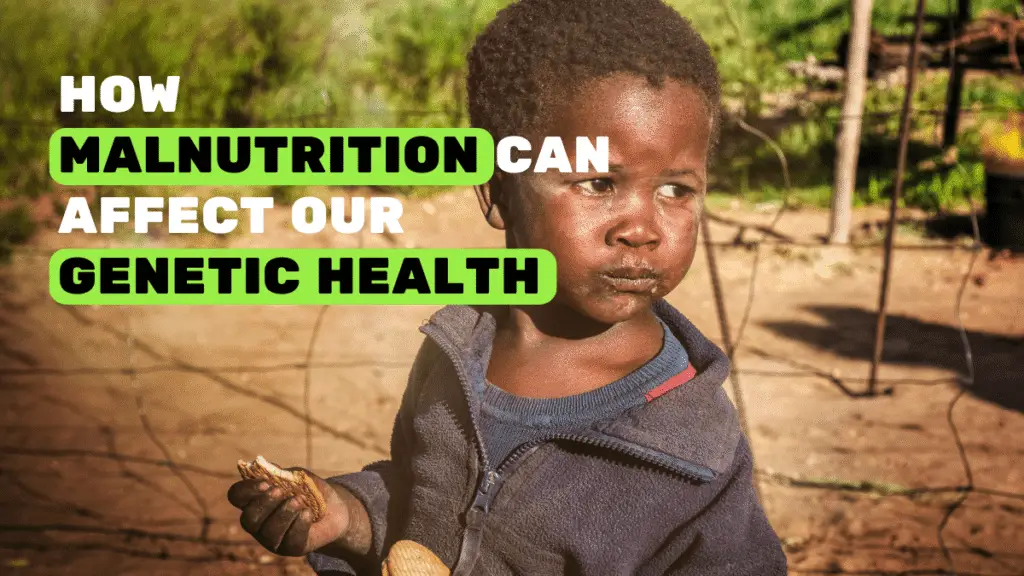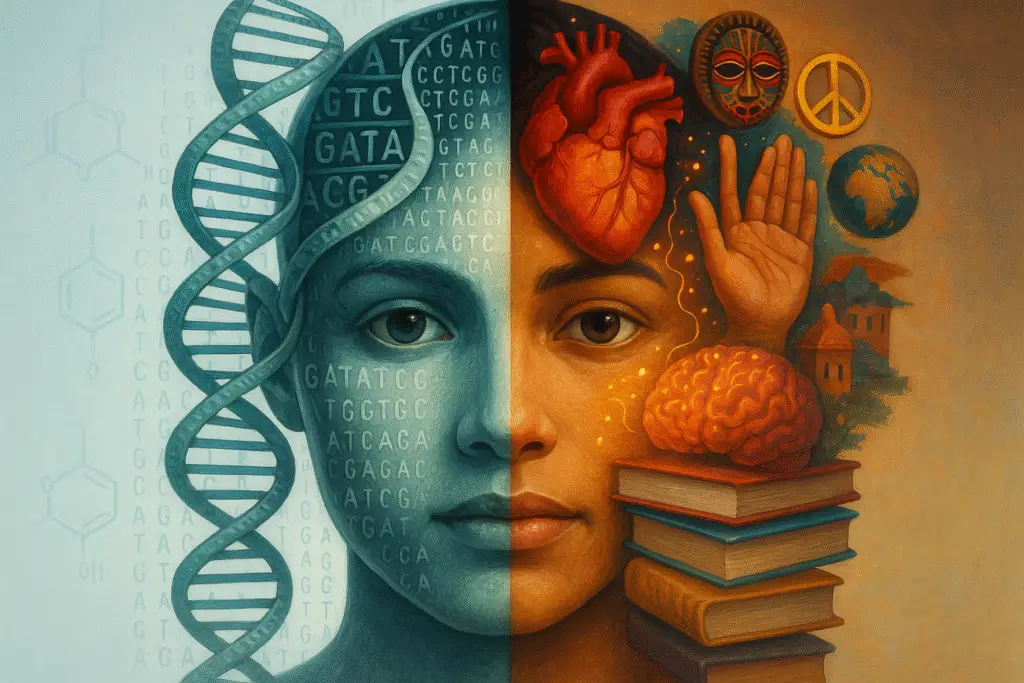According to a U.N. report in 2024, there were 295 million malnourished people across 53 countries and territories in the world. A number so huge it’s hard to even imagine.
These numbers are even more alarming in Asia and Africa. While Asia accounts for the largest number of undernourished individuals, one in every five people in Africa is undernourished.
We know malnutrition renders growth, weakens the body and slows down brain development. But it also directly affects our DNA. Yes, malnutrition can also impact the DNA and weaken the genetic integrity.
In this article, we will explore how malnutrition and undernutrition can lead to DNA damage and alter the genetic integrity.
Read more: How Staying Hydrated Protects Our DNA?
Key Topics:
What is Malnutrition?
Let me tell you first what malnutrition is. According to the WHO,
malnutrition refers to a deficiency or excess of nutrient intake, an imbalance of essential nutrients or impaired nutrient utilisation. Basically, it’s both too much nutrition and too little nutrition that leads to malnutrition. The underlying reason for malnutrition is poverty and inequality.
Malnutrition is usually a deficiency in protein, minerals, vitamins or other micronutrients. We know, all these elements also play an important role in DNA metabolism. Hence, malnutrition influences DNA repair, elevates oxidative stress and also alters gene expression.
Malnutrition and Genetic Health
Our cells face damage from toxins, pollutants, environmental stress and free radicals every day.
Normally, nutrients like minerals, vitamins, and amino acids that come from our diet provide the raw material and cofactors to repair this damage. But when the malnutrition sets in, it becomes difficult for cells to repair this damage.
Micronutrients like folate, vitamin B12, and iron play a significant role in DNA synthesis and repair. For instance, folate and B12 are part of the one-carbon metabolism pathway. This pathway is responsible for providing a methyl group for DNA methylation, a key process for regulating gene activity.
Deficiency of these nutrients can lead to faulty methylation patterns, leading to genetic instability. Similarly, the nutrients essential for DNA repair, like iron and zinc, can halt the DNA repair mechanism, causing the accumulation of damaged DNA, resulting in mutations.
Several studies also show malnutrition can weaken the body’s antioxidant defence system. Nutrients like vitamin C and E, selenium and carotenoids neutralize the free radicals before they generate oxidative stress inside the cells and cause DNA damage.
But lack of these nutrients results in the rise of oxidative stress, which is a major DNA damager.
Not only can malnutrition damage DNA, but it can also lead to epigenetic changes. DNA methylation, histone modification, and non-coding RNA regulation, which participate in RNA interference, are all essential processes that are altered due to a lack of nutrition.
And the alarming part is that these changes can be persistent for years, even across generations, passing the effects of malnutrition from parents to children.
Scientific Studies and Evidence:
There is emerging research about malnutrition and DNA damage. Let me break down some of the research for you…
A 2017 study on Mexican children shows how malnutrition directly harms DNA integrity. In this study, researchers compared malnourished children with well-nourished ones using a biomarker called micronuclei in reticulocytes. This biomarker indicates chromosomal and DNA damage.
The study found that there was highly significant DNA damage in moderate to severe malnourished children, with increased lipid peroxidation, which is an indicator of oxidative stress.
The study also shows that children with malnutrition had weaker antioxidant defences. And the activity of protective enzymes like SOD and GPx was also reduced. This imbalance resulted in genetic instability. Why?
Since, the activities of several important enzymes was reduced, this allowed reactive oxygen species to attack DNA more aggressively.
Another study published in the Journal Precision Cancer Medicine shows that 30% of people worldwide suffer from some or another form of starvation or malnutrition. And this not only causes stunted growth and chronic diseases but also drives genomic instability.
The study shows that a deficiency of certain micronutrients leaves cells without key cofactors required for DNA repair and for clearing harmful compounds. This can make DNA more vulnerable to oxidative stress, resulting in DNA strand breaks, mutations, and epigenetic disruptions.
Research highlights that when the body lacks protein and other essential nutrients, it can lead to excessive DNA damage, which can, over time, result in cancer and other life-threatening diseases.
Read more: Can You Improve Your Genetics?
Key Takeaways:
- Malnutrition is not just about lack of food and hunger, but it is also damaging the body from within.
- Malnutrition doesn’t just slow physical and mental growth; it also damages DNA at the cellular level.
- Research shows that these changes could be epigenetic, which means the impact of malnutrition can be passed on from generation to generation.
- A proper and adequate amount of nutrition doesn’t just give you physical strength but also protects your genetic stability.
- Malnutrition weakens the body’s defence system, leaving DNA more vulnerable to damage.
- A balanced diet rich in antioxidants is essential for a healthy genome.
Read more: How Groundwater Can Be a Threat To Your Genetic Health.
Wrapping Up:
Weakness, hunger and stunted growth are commonly seen as the effects of malnutrition. We often ignore the impact it can have on our genetic health. But now we know better.
The centre of this problem is poverty. The poor people, marginalized families, are the ones who face the brunt of this crisis. As privileged individuals, it should be our responsibility to support policies that tackle hunger and, more importantly, raise awareness about the genetic consequences of malnutrition.
In the end, I just want to say that no child’s future and health should be compromised simply because of poverty.
Resources:
- Qazi, Aamer M., et al. “Nutrition, Disease and Underlying Molecular Mechanisms.” Precision Cancer Medicine, vol. 3, June 2020, pp. 15–15, https://doi.org/10.21037/pcm.2020.02.01. Accessed 25 Aug. 2021.
- Reuters Staff. “Conflict and Climate Drive Record Global Hunger in 2024, UN Says.” Reuters, 16 May 2025.
- Ríos, Elsa Cervantes, et al. “Assessment of Micronucleus and Oxidative Stress in Peripheral Blood from Malnourished Children.” Nutrición Hospitalaria, vol. 35, no. 3, 2018, pp. 519–526, Consultado el 5 sept. 2025.
- World Health Organization. “Malnutrition.”


